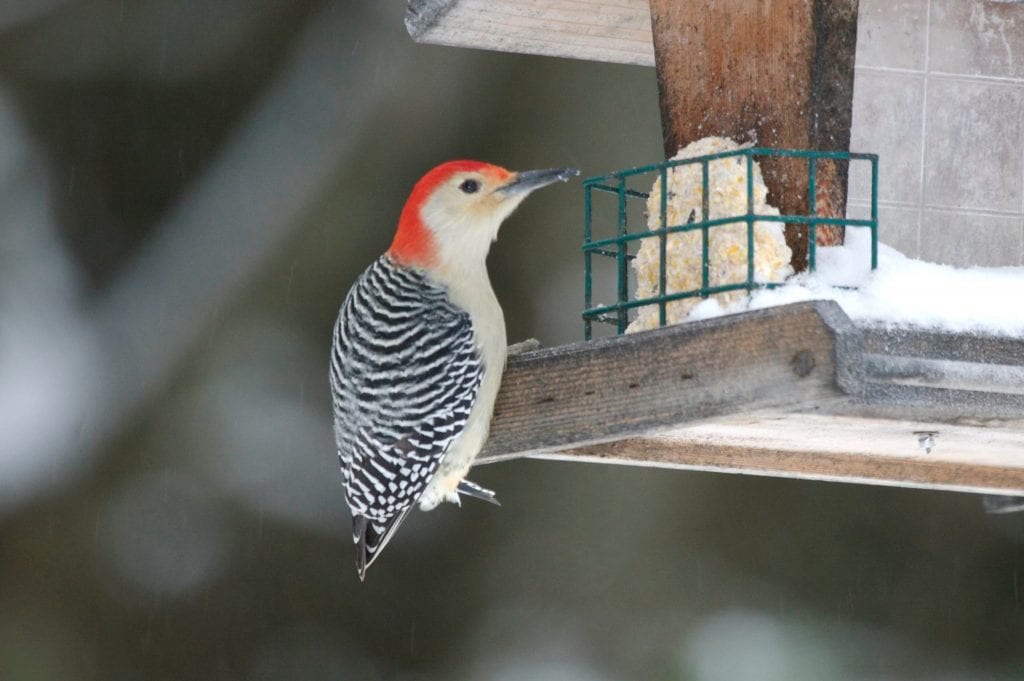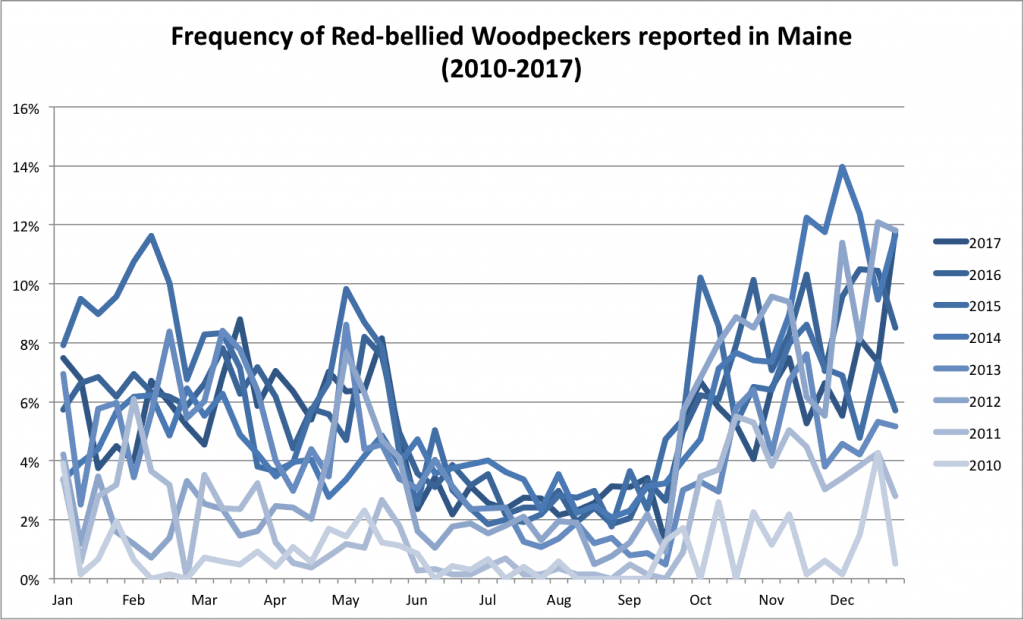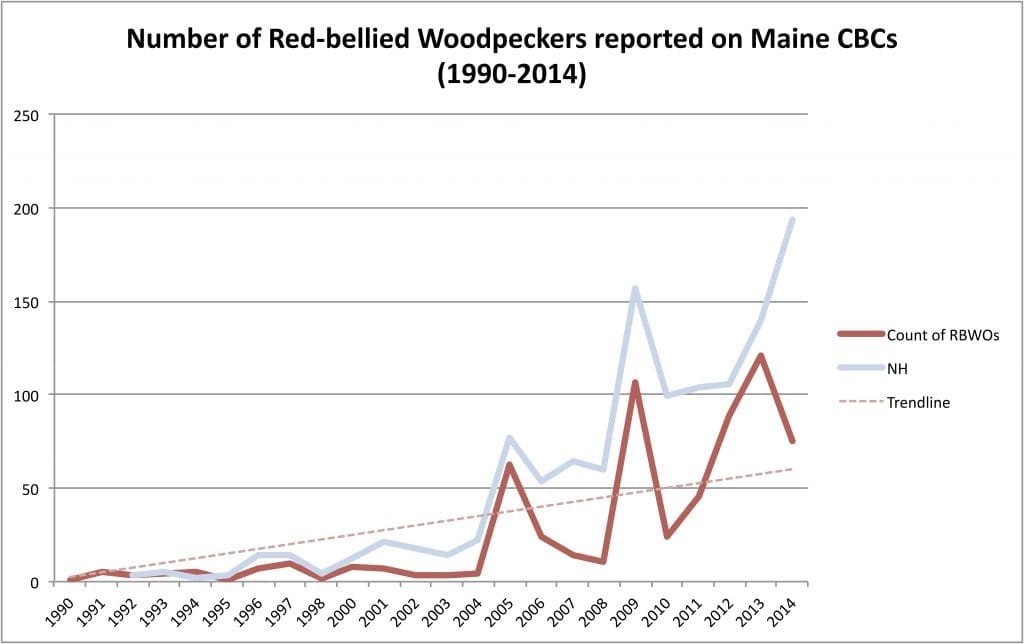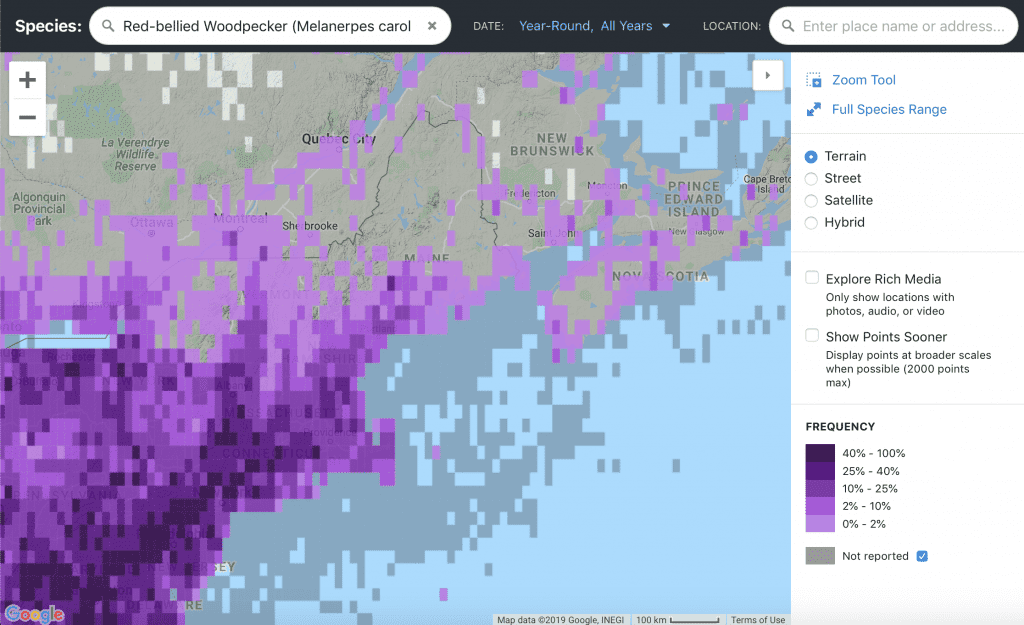
I love getting calls from people when they have rare birds in their yard. There is nothing more exciting than spotting something unusual or seeing something for the first time. The Red-bellied Woodpecker is one species we have received a lot of calls about this winter – but they are not as rare as some may think.
So what has changed?
The Short Answer:
Red-bellied Woodpeckers have been going through a steady range expansion for a few decades. It was during 2004-2005 that these birds irrupted into Maine in larger numbers than had been seen before and have since become resident breeders.
Here is a map (from eBird.org) of the southern half of Maine that shows all the locations Red-bellied Woodpeckers have been reported since 2010:
The Long Answer:
To elaborate on the answer above: Yes, Red-bellied Woodpeckers are expanding in Maine, and here is some proof:
My favorite resource for looking at a bird’s distributions is eBird.org. So I went there and using their “Explore Data” feature that generates line graphs of the frequency Red-bellied Woodpeckers were being reported. The frequency is the percentage of all checklists being submitted that include the species in question. The result, below, which looks fairly messy, is very telling: notice how from 2010-2014 (as the line color gets darker) the frequency steadily rises. An especially dramatic change is noted when you see that the highest frequency in 2010 was barely over 4%, while the peak in 2014 was at 14%.

Another great resource for looking at how species’ populations have changed is Christmas Bird Count data. The chart below shows the number of individual Red-bellied Woodpeckers reported on Maine Christmas Bird Counts since 1990. The 2004-2005 influx is very noticeable here. The most interesting thing to me is the 4-year spikes that are occurring. 2005, 2009 and 2013 all indicate a big spike in the numbers reported; which was echoed by reports in New Hampshire (shown in light blue for comparison). The only reason I have seen noted for these Red-bellied Woodpecker “boom years” is from an abundance of cicadas – but those don’t have 4 year cycles…

More to think about:
I’d love to hear from our readers if anyone has an explanation for these apparent four-year spikes. It could be connected to temperatures and observer effort, but maybe a grad student or another naturalist with more time could look into this.
What is really interesting about this expansion is that the likely explanation is climate change. A study published in 2014 examined museum specimens from across the Red-bellied Woodpecker’s range, prior to their expansion (which began in the 1950s). They found the birds classically followed Bergmann’s Rule: the birds at more northern latitudes (where it is colder) were larger and had greater mass than birds further south. Mass is an important factor in surviving cold climates. The study then looked at the woodpeckers’ mass since they expanded north and found birds with smaller mass at more northern latitudes. The reason birds with lesser mass can occur further north would be from an increase in temperatures.
I hope this answers everyone questions about Red-bellied Woodpeckers in Maine!
Resources:
- Kirchman, J., & Schneider, K. (2014). Range expansion and the breakdown of Bergmann’s Rule in Red-Bellied Woodpeckers (Melanerpes carolinus). The Wilson Journal of Ornithology, 126 (2), 236-248.
- National Audubon Society (2015). The Christmas Bird Count Historical Results [Online]. Available http://christmasbirdcount.org [12 January 2015]
-Doug

